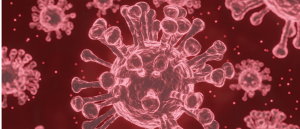Curbing your enthusiasm for CRISPR

Unexpected inheritable mutations in CRISPR/Cas9 studies remind us of the need for caution.
The gene-editing tool, CRISPR/Cas9, has the potential to generate numerous genetic disease treatments and cures. However, it is important that DNA is modified correctly and does not undergo unforeseen alterations for those treatments to be reliable.
While scientists have studied these unwanted mutations in cells, the consequences of how these mutations play out in living organisms remains a subject with a limited knowledge pool. Conclusions from different studies have conflicted with each other, with the adverse effects of CRISPR/Cas9 associated with more pronounced on-target structural variants and off-target mutations reported in some instances, but not others.
Studying the genomes of over 1000 zebrafish across two generations, researchers at Uppsala University and SciLifeLab’s National Genomics Infrastructure (both Sweden) have discovered that not only can the CRISPR/Cas9 method inadvertently create unanticipated alterations in DNA, but also that those alterations can be inherited by subsequent generations.
Crispr-based diagnostics: expanding the toolbox against COVID-19
CRISPR technology and the Cas13d enzyme provide faster results than PCR tests for detecting SARS-Cov-2.
Some instances reported larger-than-expected DNA fragments undergoing changes, and at the same time mutations were shown to occur at the wrong genomic locations entirely. Across the two generations, structural variations as a result of insertions and deletions were responsible for 6% of outcomes in founder larvae.
As result, the scientists emphasize the need for careful forethought and meticulous validation when considering the use of CRISPR/Cas9 for medical purposes. In the field of healthcare, corrective methods for genes associated with specific tissues and cell types are already under development, and while these treatments do not pose a risk of inter-generational aberration, nonetheless it would be unwise to ignore the necessity for caution implied by these findings.
The study indicates a number of recent reports describing complex genomic rearrangements and deletions, including both chromosomal segments and whole chromosomes. In addition, there have been reports of Chromothripsis – the direct translation of which is ‘chromosome shattering’ [2]. Chromothripsis refers to the process of a chromosome shattering into a large number of pieces before being Frankensteined back together in a random order by DNA repair processes – effectively ‘Azathoth does Build-A-Bear’ on a molecular scale.
As associate professor at Uppsala University and SciLifeLab, Adam Ameur noted: “CRISPR-Cas9 [sic] can be an amazingly valuable tool in health care. But we need to minimise [sic] the risk of unwanted effects, and we can do this by carefully validating the modified cells with the latest DNA sequencing technologies.”
The study further outlines that to conclusively determine the long-term consequences associated with this emergent technology, a large number of samples need to be tracked and analyzed across generations. While large structural variations and complex aberrations have been primarily observed at on-target sites, the authors point to another paper [3] outlining similar occurrences at off-target sites in experiments using human embryos. These unintended and unmonitored deviations could have functional implications and are, from a certain perspective, of greater concern than unintentional alterations at on-target sites.
The paper suggests: “Though our study is performed in zebrafish, we expect that the findings can be extrapolated also to other vertebrate animals, including humans, provided that the editing experiments are performed under similar conditions.”
These findings, while potentially sobering, help to temper the potential overexuberance surrounding the emergence and development of gene-editing technology. As impressive and transformational as the potential benefits might be, this data highlights the reality that CRISPR/Cas9 isn’t a magic bullet. Discoveries and advances provided by it are implicitly still going to come with a great amount of necessary Q & A work. This could be important to the broader public conception of the process, which currently illustrates the technology alternatively as a genetic ‘cut-paste-win’ macro or an end-times-heralding accident waiting to happen. These data reiterate the necessity for scientists to be methodical and deliberate as scientists progress, despite the excitement surrounding this emergent technology.
